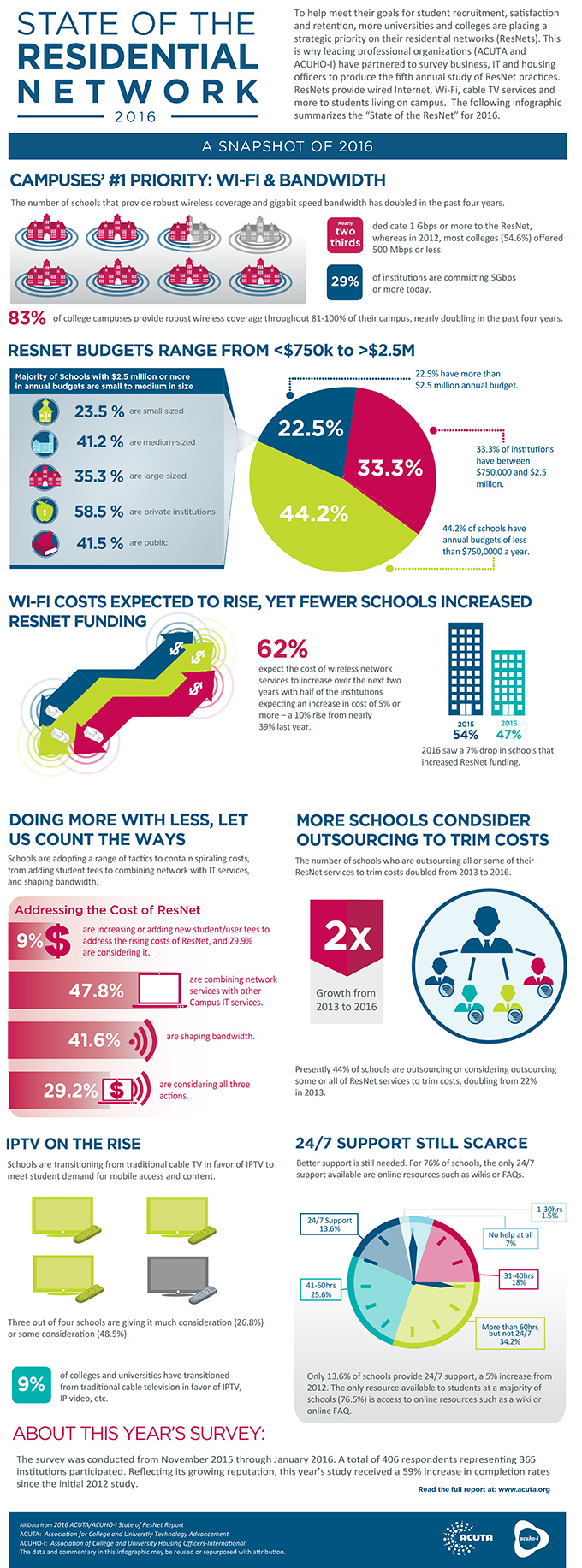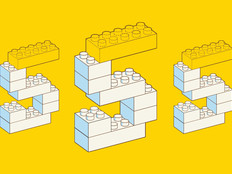Report: Bandwidth Demands Dominate Today’s Dorms
Covering campus residence halls with ample Wi-Fi and broadband is the top priority for higher education, according to the latest report on the state of residential networks.
The 2016 State of ResNet Report, from the Association for College and University Technology Advancement, is the result of surveys of higher education IT leaders between November 2015 and January 2016, in which they were asked about how their residential networks were responding to the needs of students.
One of the most profound changes in residential networks over the past four years has been growth catering to students' appetites for greater bandwidth. In 2012, most higher ed institutions offered 500 Mbps or less for each student, but now, nearly two-thirds offer 1 Gbps or more, according to the ResNet report. Many institutions offer an enormous amount of bandwidth — 21 percent offer as much as 7 Gbps per student. Wi-Fi coverage also has nearly doubled in that time, with 45 percent of networks providing a robust wireless connection in 2012 to 83 percent in 2016.
This sudden spike in bandwidth coverage is a response to more students bringing more devices to campus, the report states. The average college student brings seven Internet-connected devices — including smartphones, notebooks and tablets — to campus, according to Re:Fuel Agency’s 2014 College Explorer report. But this network expansion is also being done to accommodate "increasingly sophisticated educational applications and techniques.”
“Today, higher education institutions have become comfortable with the idea of BYOD, and are fleshing out their roadmaps for rapid and sustainable growth in the Digital Age,” says the report’s executive summary.
Tablets were dethroned in 2015 as the largest bandwidth-consuming device, replaced by notebooks and desktop computers.
“Through these devices, students have found a larger canvas for complex games, virtual learning, 3D-modeling software, computer animation, or simply storing photos and videos,” according to the report.
Overall, bandwidth consumption in residence halls appears to be headed toward a state of equalization between tablets, notebooks and smartphones, which could indicate that student attitudes toward these devices are changing.









